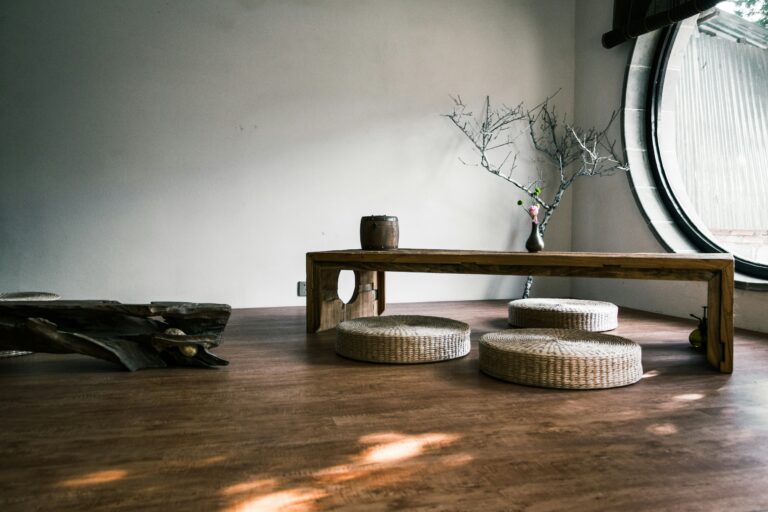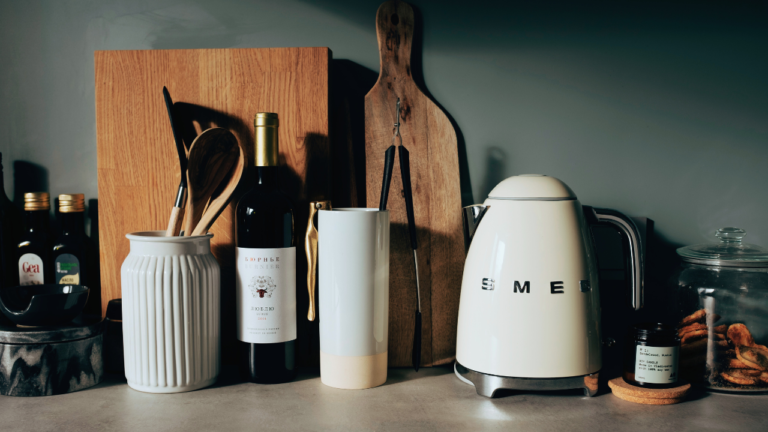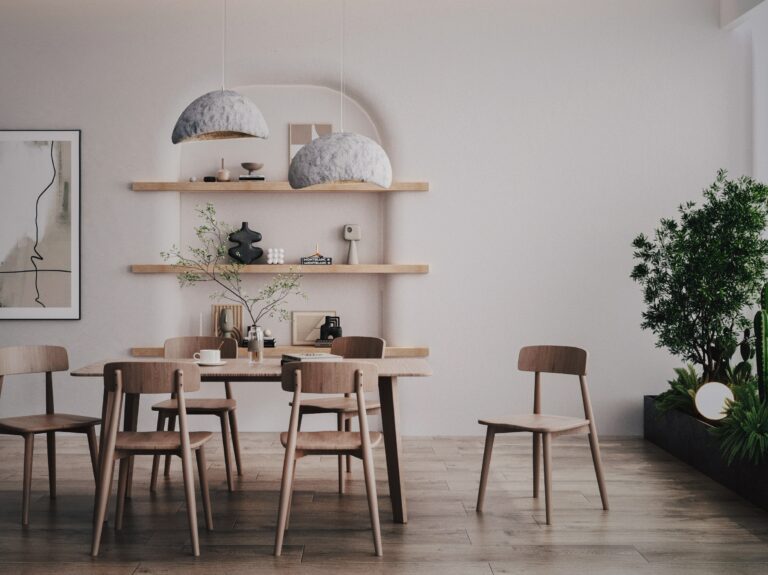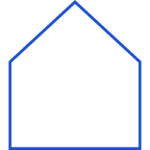Weaving Dreams: Your Guide to Japanese Online Rug Stores
Rugs are a great way to add a layer of cozy to your space, and a must for renters looking to protect against damage or reduce noise for downstairs neighbors. Whether you are layering a living room rug over tatami or creating a warmer surface under a kotatsu, area rugs can add comfort to your room and a fun opportunity to consider styles, colors and textures.
What to Look For When Shopping for an Area Rug
When searching for rugs online in Japan, several factors should be considered to ensure you find the perfect match for your space.
- First, consider the size of the area where the rug will be placed, ensuring it complements the room’s dimensions without overwhelming or appearing too small.
- Pay attention to the material, as different fabrics like wool, cotton, or synthetic fibers offer varying levels of durability and comfort.
- The rug’s style and design should harmonize with your existing decor, whether you prefer a traditional Japanese, modern, or eclectic aesthetic.
- Additionally, factor in maintenance and cleaning requirements, as some rugs may need special care.
- Finally, assess your budget and consider quality, aiming for an area rug that not only enhances the room aesthetically but also withstands daily wear and tear.
What Material Is Best?
The best material for a rug depends on factors such as your budget, lifestyle, and personal preferences. Some common rug materials include:
- Wool: Wool is popular for its durability, softness, and natural resistance to stains. It also has good heat retention and is flame-resistant.
- Cotton: Cotton rugs are affordable, lightweight, comfortable and easy to clean. They are a great option for casual or high-traffic areas but may not be as durable as wool.
- Synthetic fibers (e.g., nylon, polyester, polypropylene): These materials are often more budget-friendly and resistant to stains. They are suitable for high-traffic areas and are easy to clean, making them a practical choice for households with children or pets. You can sometimes find rugs made from recycled polyester or PET bottles.
- Silk: Silk rugs are luxurious and have a unique sheen, but they are delicate and may not be suitable for high-traffic areas. They are often chosen for formal or low-traffic spaces.
- Jute, Sisal, and Rush: Natural fibers like jute, sisal, and rush provide a textured and earthy look. They are durable but may not be as soft underfoot as wool or cotton. Sometimes thick woven textures can be a bit difficult to vacuum.
Ultimately, the best material for an area rug depends on your specific needs, the intended location, and your personal style preferences. Consider the level of foot traffic, ease of maintenance, and the overall aesthetic when making your decision.
How Can You Tell a Good Area Rug?
Identifying a good rug involves considering various factors, including quality, craftsmanship, and design. Here are some key aspects to look for when evaluating the quality of a rug online:
- Construction: Examine the rug’s construction. Hand-knotted rugs and hand-tufted rugs are often considered the highest quality type of tufted rug, as they involve intricate craftsmanship and tend to be more durable. Machine-made rugs are generally less expensive but may lack the same level of detail and longevity.
- Knot Density: For handmade rugs, check the knot density, which refers to the number of knots per square inch. Higher knot density often indicates better quality and durability.
- Pile Height: Consider the rug’s pile height. A rug with a thicker pile can be softer and more luxurious, but it may require more maintenance. Thinner piles are often easier to clean and may be more suitable for high-traffic areas.
- Design and Pattern Clarity: Assess the design and pattern clarity. A well-made rug will have consistent patterns and clean, well-defined lines. Irregularities may indicate lower quality or craftsmanship.
- Backing: Examine the backing of the rug. A high-quality area rug may have a sturdy and well-sewn backing, contributing to its overall durability.
- Dye type: This information may be harder to find online, but is a good way to understand the qualities of a rug. Sometimes cheaply dyed rugs will easily transfer color, especially when damp. Piece-dye and skein-dye means dyes are applied to the surface of a fiber. Solution-dye is when the dye is integral to the composition of a synthetic fiber. If a synthetic fiber is preferred, solution-dye is the most durable dye type.
When shopping for an area rug online in Japan, it’s crucial to balance your preferences with practical considerations like the rug’s intended location, maintenance requirements, and your budget.
What Is the Difference Between a Carpet and a Rug?
The terms “carpet” and “rug” both generally refer to textile floor coverings used for decorative and functional purposes. However, there may be some subtle distinctions based on size, use, or cultural context.
- Size: Carpets typically cover the entire floor of a room from wall to wall. Rugs are smaller floor coverings that do not extend to the walls. They can be used to define specific areas within a room.
- Installation: Carpets are usually installed with the help of adhesives or stretched over a carpet pad. Installation often requires professional assistance. Rugs are laid on top of existing flooring and do not require permanent installation. They can be easily moved or replaced.
- Usage: Carpets in Japan are commonly used in larger living spaces, such as tatami rooms, where they cover a substantial part of the floor. Rugs, on the other hand, might be used in various areas, including living rooms, bedrooms, or entranceways, often serving as decorative accents or functional additions to specific areas rather than covering an entire room.
- Design and Style: Carpets are designed to cover the entire floor, and patterns may be subdued to seem more unified. Rugs often feature more intricate designs, patterns, and textures since they are meant to be a focal point or complement the existing decor.
- Maintenance: Carpets may require more maintenance, including regular vacuuming and professional cleaning. Rugs are generally easier to clean since they can be removed for shaking out, spot cleaning, or professional cleaning.
It’s important to note that the distinctions between carpets and rugs can vary based on personal preferences, regional traditions, and evolving design trends. In many cases, the terms are used interchangeably, and the choice of whether to use “carpet” or “rug” often depends on the specific context or the preferences of the speaker.
What Are Traditional Japanese Rugs?
Traditional Japanese rugs often include woven tatami mats called igusa (い草). Tatami mats are made with tightly woven straw which creates a comfortable and slightly-cushioned surface. They are a defining feature of traditional Japanese-style rooms and are arranged in specific patterns, with the number of mats indicating room size and formality.
While not traditional per se, kotatsu rugs are another staple of Japanese culture and lifestyle. When used with low wooded tables called kotatsu, they create a warm and cozy space for people to gather during the colder months. These rugs, often made from woven or knitted fabrics, add an extra layer of insulation and comfort to the sitting area around the kotatsu table.
Where Can You Buy an Area Rug Online in Japan?
Stylish Shops for Area Rugs
Lime Lime on Rakuten
Lime Lime, a shop on Rakuten, offers stylish rugs for a variety of purposes and styles. Their designs include washable rugs, vintage-inspired rugs, luxury fur rugs, and memory foam rugs.
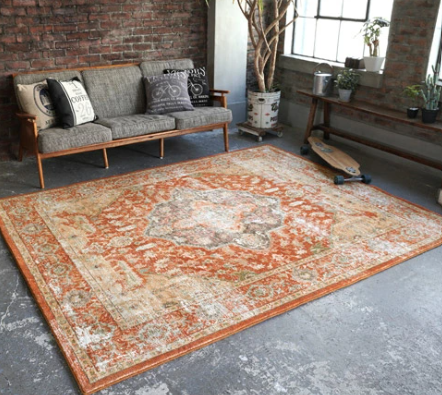
Vintage Persian Area Rug
¥ 12,300 (120cm x 180cm long)
✓ Free shipping
Meglas
Meglas is a home furnishing store that specializes in modern, natural, and Scandinavian aesthetics. They offer comfortable rugs online that can match the style of any room.
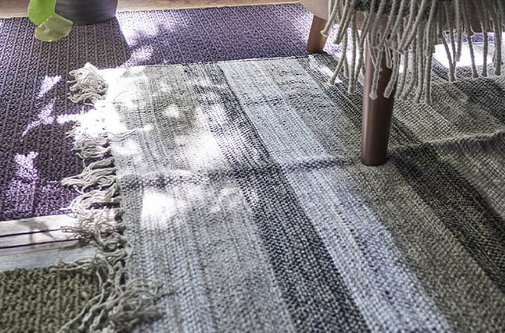
Siesta Cotton Rug 
¥ 14,400 (170cm x 230cm)
✓ Free shipping over ¥ 3,980
Crashgate
Crashgate, a contemporary furniture brand, is renowned for its innovative designs and high level of craftsmanship. They offer stylish online area rugs in aesthetics such as vintage, industrial, natural, Scandinavian, and modern.
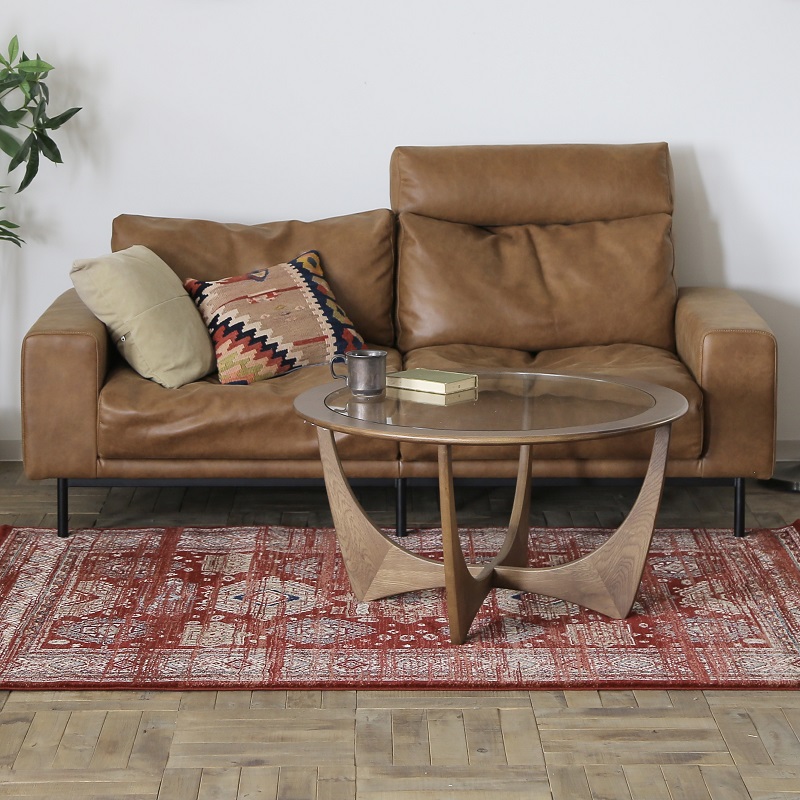
Kilman Rug
¥ 39,600 (133cm x 195cm)
TOCO Life
TOCO Life is a furniture brand known for its stylish, but functional designs. When looking to buy a rug online, TOCO’s “search by” system makes it easy to find rugs with specific colors, types, sizes, tastes, or rooms. They specialize in offering affordable vintage-style rugs.
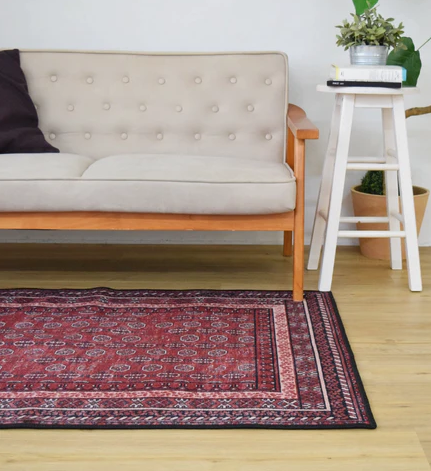
Vintage Style Rug TOCORU Series
¥ 6,980 (100cm x 140cm)
FLYMEe
Whether you’re looking for a living room, dining room, bedroom, or entryway, FLYMEe has rugs and carpets in a wide range of variations and price ranges. Whether it’s rugs in Scandinavian, modern, natural, vintage, or industrial, you can filter and search by your preferred design style.
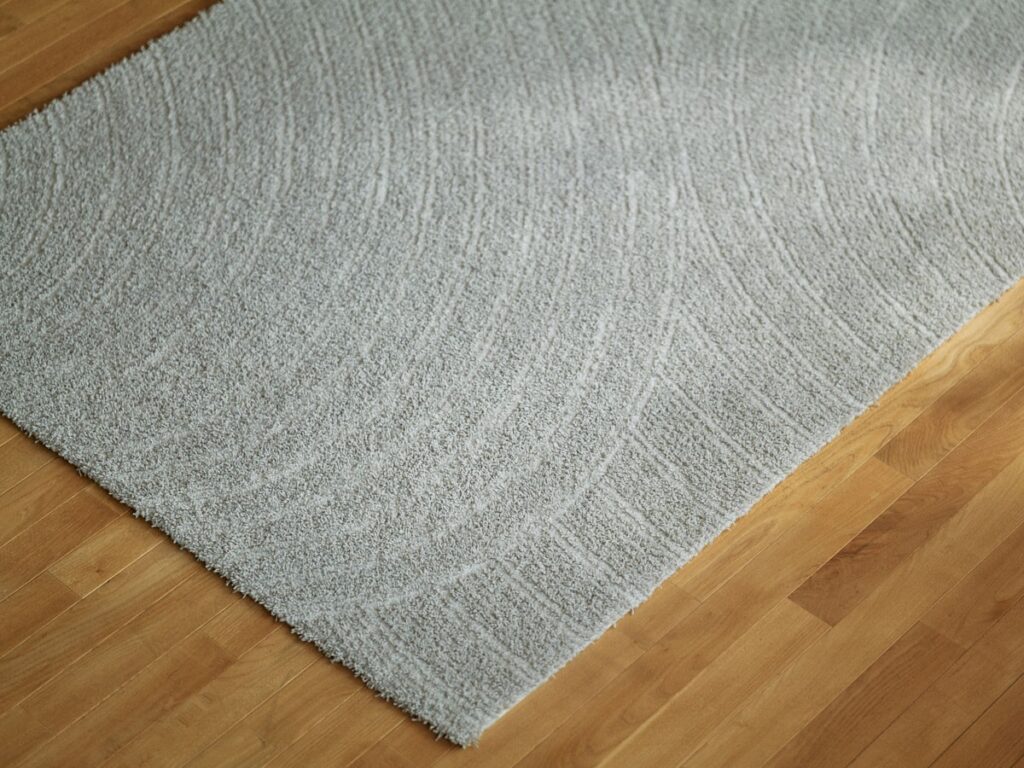
Designer’s Line – Kengo Kuma – Ishi
¥ 110,000 (95cm x 60cm)
✓ Free shipping
Gekikagu
Gekikagu offers a variety of stylish area rugs including cotton weave, herringbone, flannel, and shaggy rugs.
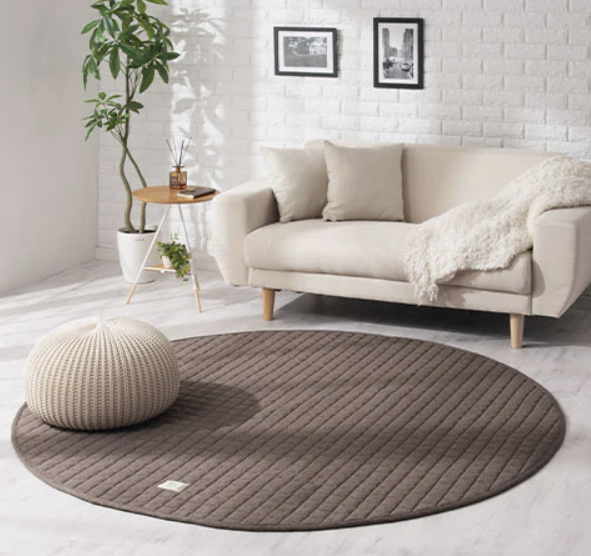
Quilt Rug
¥ 6,180 (185cm diameter)
✓ Free shipping
Air Rhizome Interior
Air Rhizome Interior offers a variety of stylish rugs online including Scandinavian-style, washable rugs, and non-slip rugs.
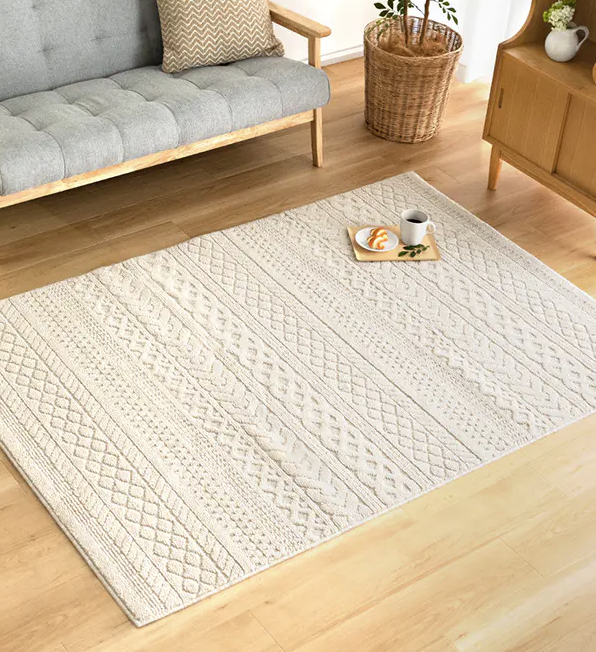
Cable Knit Pattern Rug
¥ 10,780 (185cm x 185cm)
✓ Free shipping
Kurashi
Kurashi is a Japanese lifestyle furniture brand offering numerous boutique rugs online. Their designs are ranked on the website to easily find the perfect rug for your space, and most rugs have free shipping.
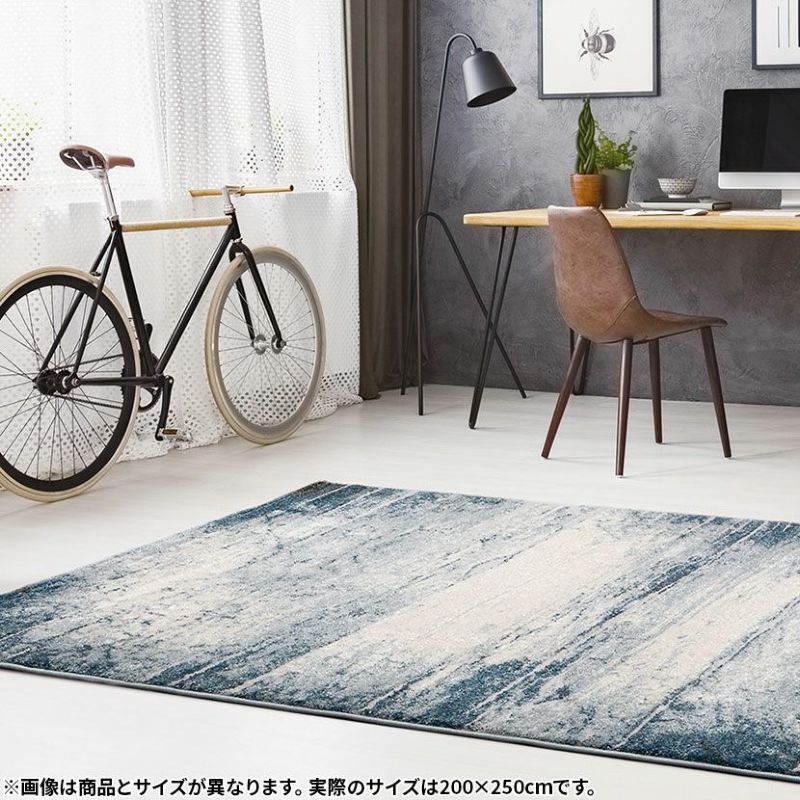
Playbell Rug
¥ 32,800 (200cm x 250cm)
✓ Free shipping
Cucan
Cucan specializes in textiles – rugs, curtains, mats and bedding. There are a lot of pretty kid/baby mats to choose from and they have some washable rugs available, too.
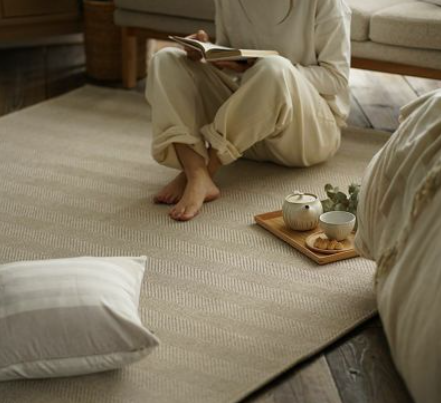
Herringbone Rug
¥ 6,900 (130 x 185cm)
✓ Free shipping over 3,980 yen
Mute Place
Mute Place is a Japanese company that sells minimal, noise-absorptive rugs to create a more ambient, quiet home. Good for children’s playrooms or living rooms.
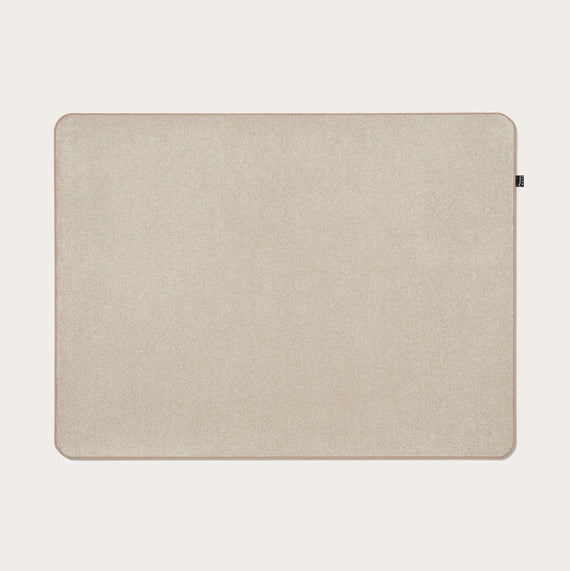
Mute Rug
¥ 38,500 (150cm x 200cm)
Second Hand & Vintage Rugs
Bahr
Bahr is an online antique shop that offers beautiful handmade vintage rugs. Their designs vary in thickness, material, and color, but are durable and made with a high level of craftsmanship from various Arab tribes.
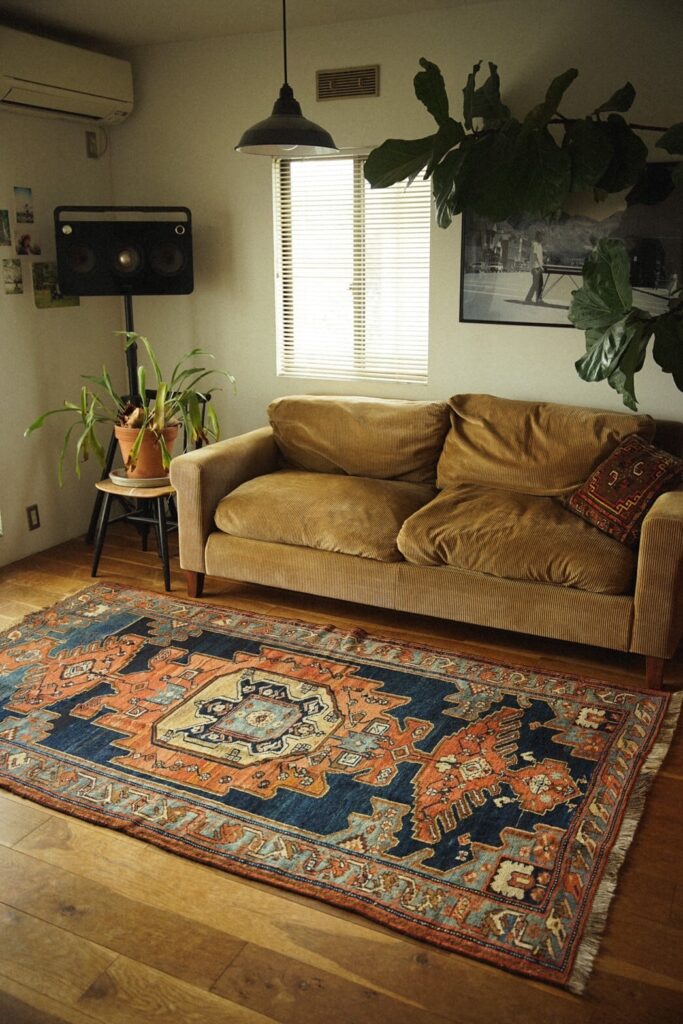
Semi Antique Iranian Rug
¥ 118,000 (244cm x 136cm)
See also → Second-Hand Gems: Online Vintage Furniture Stores in Japan
Small Business Rug Shops
Fida Arts Rug on Etsy
Fida Arts Rug on Etsy is a bestselling shop that creates original, unique, and modern rugs that ship worldwide. Their designs range from contemporary to eclectic, with a variety of colors offered.
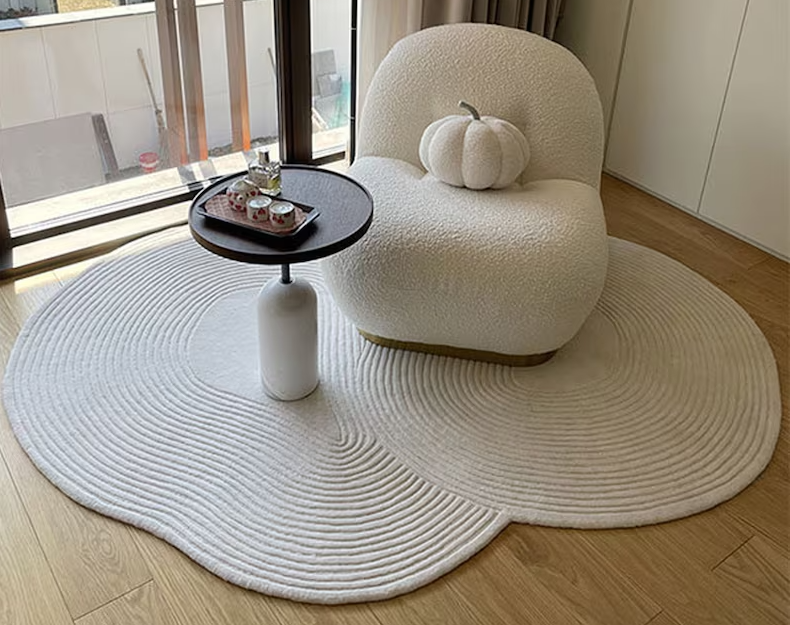
Modern Abstract Ivory Rug
¥ 39,931 (152.4 cm long)
✓ Free shipping worldwide
Chouhan Rugs on Etsy
Chouhan Rugs on Etsy offers discounted handmade rugs shipped from India. They have a variety of stylish area rugs with different aesthetics.
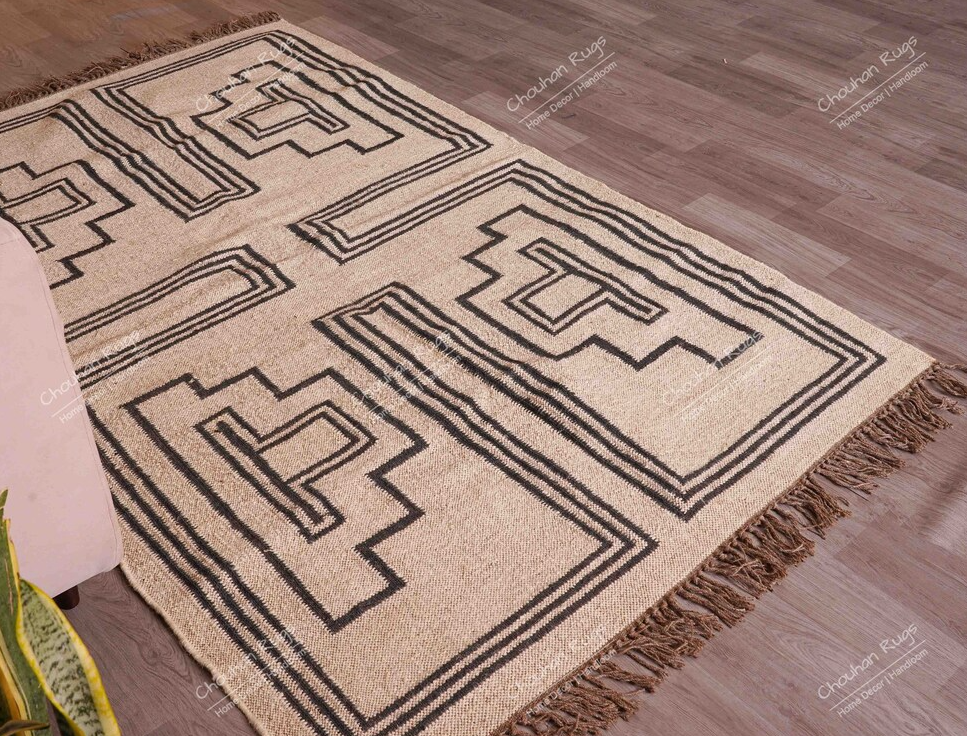
Wool and Jute Handmade Rug
¥ 28,333 (91.44cm x 182.88cm)
High-End Rug Sources
Hay
With a focus on clean lines and functional elegance, Hay offers a diverse range of furniture and home accessories that blend seamlessly into modern living spaces. When looking to buy a stylish area rug online, Hay is a great option.
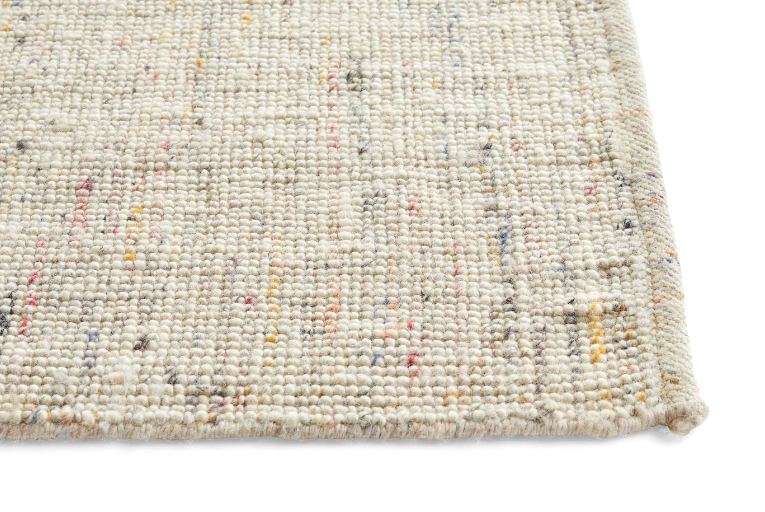
Crayon Rug
¥ 88,000 (140cm x 200cm)
IDÉE
You may recognize this brand name due to their cooporation with MUJI. They started as a western products import brand, but gained traction for their aesthetic lifestyle ideas.
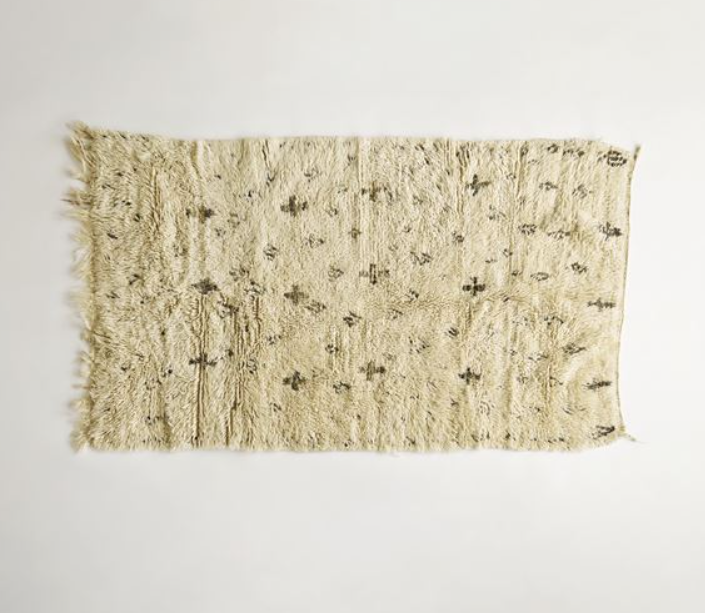
Beni Ourain Rug
[One of a kind]
¥ 261,800 (109×180cm)
Big-Box Area Rug Stores Online
Nitori
Nitori offers a variety of area rugs online for numerous different uses, including heated kotatsu rugs and washable dining room rugs.
Jacquard Non-Slip Rug
¥ 62,900 (200 x 240cm)
✓ Free shipping over ¥ 11,000
IKEA Japan
IKEA has a wide range of rugs including area rugs, runners, affordable hides, and jute rugs that are easy to layer while retaining a natural feel.
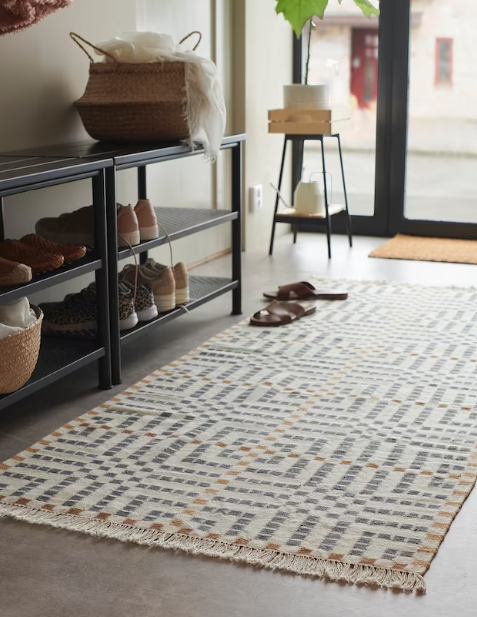
Flatwoven, Handmade Rug
¥ 14,990 (80cm x 200cm)
Cheap Area Rugs Online
One thing to be careful about with cheap rugs is moisture. Some inexpensive rugs have dyes that are transferrable (can bleed from the rug onto your floor, staining tatami, carpet, and light-colored woods or tile). In these cases, be sure to tend to dampness quickly, and consider choosing a rug color that is either undyed or similar to the floor.
Akaya 
Akaya, renowned for its traditional aesthetic, crafts rugs that seamlessly blend traditional aesthetics with contemporary design sensibilities. With a commitment to quality materials and timeless elegance, an area rug from Akaya will effortlessly elevate any living space.
Striped Chenille Rug 
¥ 6,580 (90cm x 130cm)
✓ Free shipping
Qualial
Qualial is an online furniture brand that offers stylish budget rugs for your home.
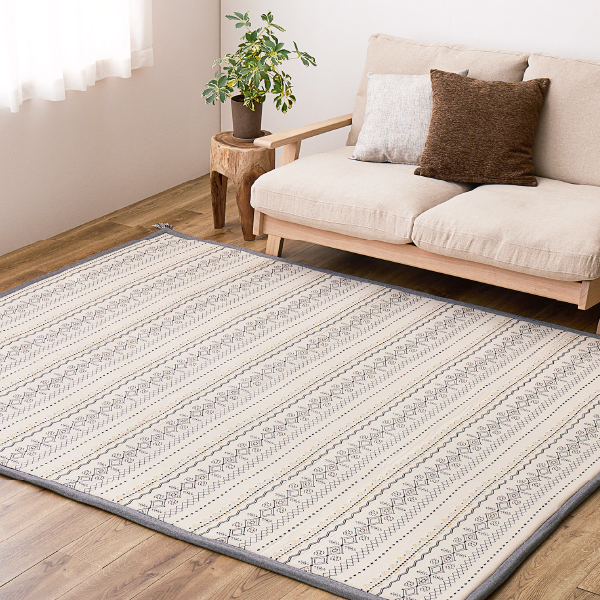
Indian Cotton Rug
¥ 7,990 (130cm x 185cm)
Mutuki
Mutuki generally offers a good range of size options, allowing a near-custom rug selection but with budget prices. They also offer free shipping on most rugs.
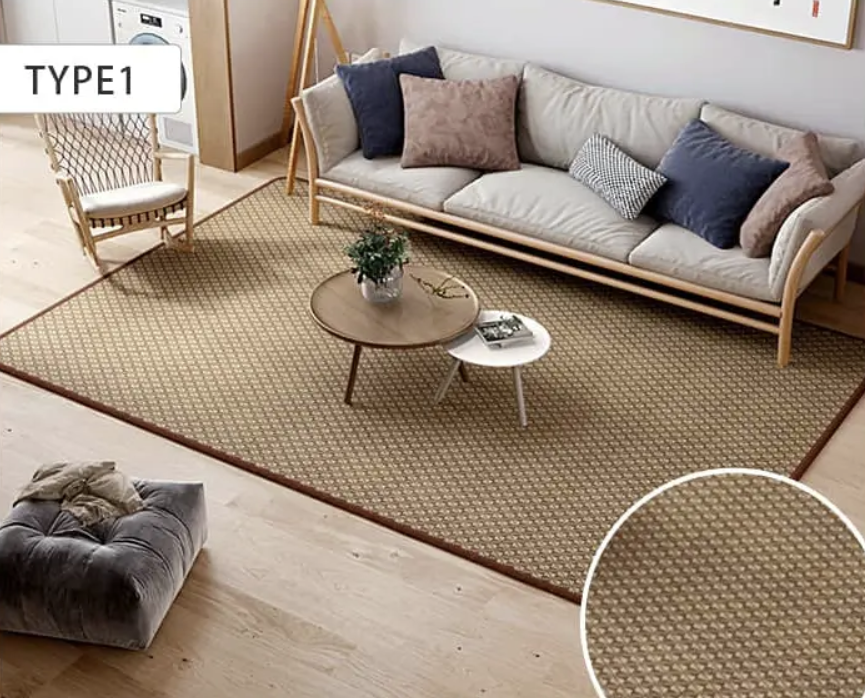
Non-Slip, Washable Summer Rug
¥ 12,330 (120cm x 180cm)
✓ Free shipping
Bickly Carpet
Bickly Carpet has nice rugs on a budget for those looking to furnish their home without breaking the bank. There is a good selection of materials including washable cotton, wool, antibacterial, and eco-friendly recycled nylon.
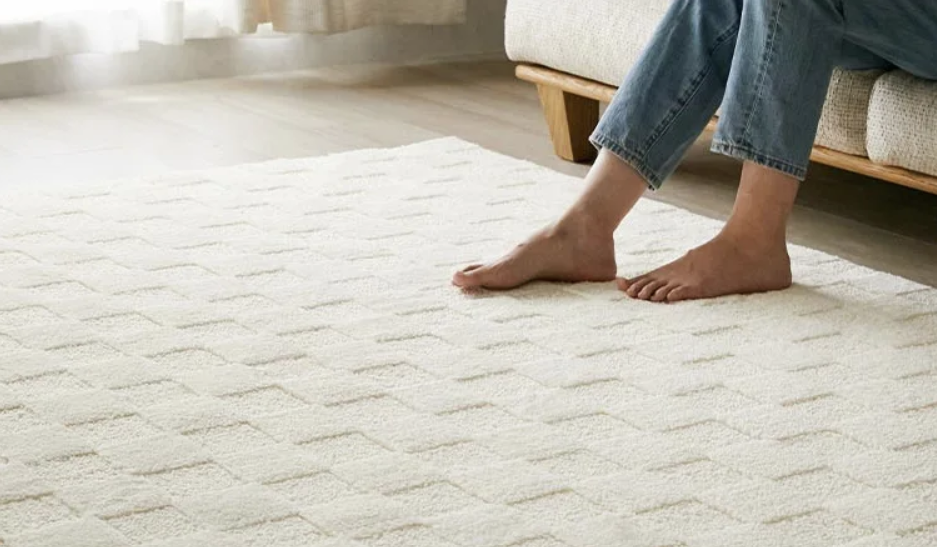
Fluffy Block Pattern Rug
¥ 7,900 (130cm x 190cm)
iirashikurashi
This store is based out os Saitama and has a variety of styles and materials available starting at low prices.
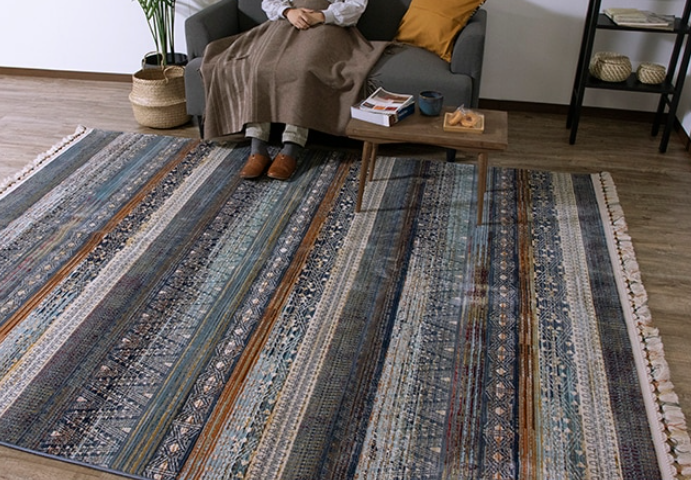
Wilton Rug
¥ 3,980 (60×90cm)
Amazon.jp
And of course, Amazon is always available for online rug shopping, allowing you to shop with the confidence of plentiful product reviews.
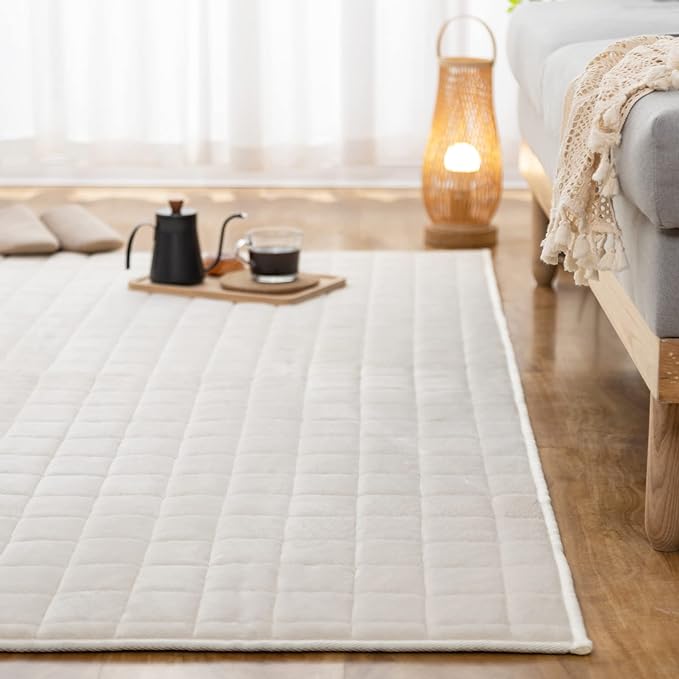
Non-Slip Quilted Rug
¥ 2,888 (130cm x 190cm)
Other Considerations
Non-Skid Mats
In Japan, the use of non-skid mats under rugs is a common practice, particularly when over slick flooring, around older family members, or to protect floors from dog claws. Non-skid mats help to keep rugs in place, preventing them from slipping on smooth surfaces such as hardwood floors or tiles, which are common in Japanese homes. Additionally, non-skid mats can add a layer of cushion and help to protect the floor underneath from scratches and damage caused by the movement of the rug. While not strictly required, using non-skid mats under rugs is advisable to enhance safety and protect flooring.
Under-Kotatsu Rugs and Insulating Ability
Under-kotatsu rugs are essential during the chilly winters in Japan, particularly for households that utilize kotatsu tables. These rugs not only add warmth and comfort but also serve as insulation, trapping heat within the enclosed space of the kotatsu. The insulating ability of these rugs is crucial for maintaining a cozy environment, allowing families to gather comfortably around the low table during the cold months, and fostering a sense of togetherness and relaxation, regardless of drafty interiors.
See also: 30 Ways to Get Warm (and Stay Warm) During Winter in Japan
Preventing Mold Growth
Preventing mold growth with rugs on top of tatami mats is essential due to the humid climate in Japan. To mitigate this, it’s advisable to regularly air out rugs, and consider using moisture-absorbing mats underneath the rugs.
Since floors are often over ventilated spaces with little or no insulation, the difference in temperature between indoor warmth and outdoor coldness means condensation is more likely to collect. Airing out the rugs, ventilating the room, avoiding spills, and promptly cleaning any moisture accumulation can help prevent mold growth, ensuring a healthy and pleasant living environment.
Cleaning Tools
To clean a rug in Japan, you might want one or more of the following tools:
- Vacuum cleaner: Essential for removing loose dirt, dust, and debris from the rug’s surface. Make sure it has appropriate attachments for different surfaces and textures. Vacuuming will also extend the lifespan of rugs. When dirt and sand are combined with the friction and pressure of steps, fibers get worn down.
- Mild detergent or rug shampoo: For spot cleaning or washing the entire rug, depending on its size and material. Make sure to choose a detergent that is suitable for the rug material and follow the manufacturer’s instructions.
- Soft white cloths or sponges: For gently blotting and cleaning stains on the rug without causing damage to the fibers. Using a white cloth is good for two reasons. First, you avoid the transference of dye from the cloth to the rug. Second, you can more easily see if stains continue to be pulled from the rug as you blot.
- Soft bristle brush or scrubbing brush: Useful for gently scrubbing stubborn stains or heavily soiled areas on the rug.
- Rug cleaner or steam cleaner (not required): Depending on the type of rug and the level of cleaning required, you may choose to use a rug cleaner or steam cleaner for a deeper clean.
Always be sure that any dampness is thoroughly dried before putting it back in place, as mold growth is a high likeliness. Remember to always test any cleaning solution or method on a small, inconspicuous area of the rug first to ensure it doesn’t cause damage or discoloration. Additionally, if your rug has specific care instructions or recommendations from the manufacturer, be sure to follow those guidelines.
Final Thoughts
Whether you’re seeking warmth, style, or functionality, the diverse range of materials and designs available cater to every taste and requirement. We hope you can now embark on your rug-buying journey armed with knowledge, and let your imagination and personal style guide you toward creating the perfect cozy, functional, happy, and healthy home environment.

